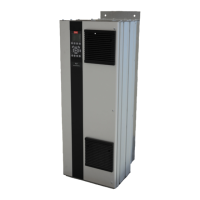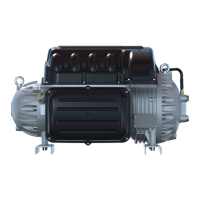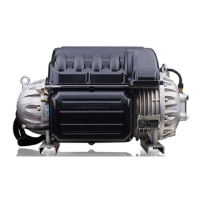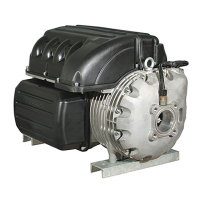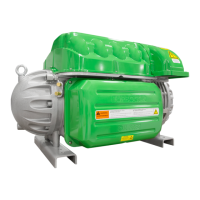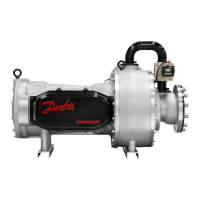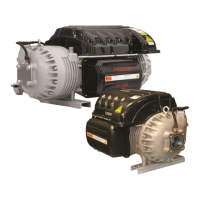
Do you have a question about the Danfoss Turbocor TTS Series and is the answer not in the manual?
| Motor Type | Permanent Magnet Synchronous Motor (PMSM) |
|---|---|
| Lubrication | Oil-free |
| Refrigerant | R-134a, R-1234ze(E) |
| Power Supply | 380 V, 60 Hz |
| Variable Speed Drive | Integrated |
| Compressor Type | Oil-free, centrifugal |
Explains product nomenclature changes and series indicators for compressors.
Details the manual's purpose and required expertise for service procedures.
Highlights critical safety precautions for installation, start-up, and service.
Provides steps to safely isolate compressor power before maintenance.
Outlines precautions for handling ESD-sensitive components.
Procedures for installing and removing the DC bus test harness for diagnostics.
Describes the two-stage centrifugal compressor's primary refrigerant flow.
Explains liquid refrigerant flow for cooling motor and power electronics.
Details how capacity is controlled via speed modulation and inlet guide vanes.
Outlines the distribution of power and signals through compressor components.
Details procedures for safe refrigerant isolation and recovery before component removal.
Provides step-by-step instructions for safely removing the compressor.
Outlines procedures for installing a new compressor, including connections and torque specs.
Lists torque specifications for various exterior connections on the compressor.
Identifies major compressor components with numbered diagrams for easy reference.
Explains the function and removal/installation of protective covers for internal components.
Describes the adapter connecting the liquid feed line for motor and power electronics cooling.
Covers the two variants of Soft Starts and their function in managing in-rush current during startup.
Explains the SCRs' role in converting AC to DC voltage for the Inverter.
Describes the assembly including bus bars, capacitors, and bleed resistors.
Details the Inverter's function in converting DC bus voltage to AC output for the motor.
Explains the function and variants of the DC-DC converter used for power supply.
Describes the Backplane's role in power distribution and communication among compressor components.
Details the BMCC as the central processor controlling bearing and motor systems.
Explains how magnetic bearings levitate the shaft and maintain position using electromagnets.
Describes bearing sensors that provide shaft orbit information.
Describes sensors used to monitor operating pressures and temperatures for calculations.
Explains how alarms and faults indicate compressor conditions beyond normal limits.
Guides on using SMT software for viewing compressor status and troubleshooting procedures.
Details procedures for performing bearing calibration during commissioning, maintenance, or troubleshooting.
Covers troubleshooting voltage issues and energy drains at system and compressor levels.
Steps to verify AC input voltage and identify potential issues.
Procedures to identify which component is causing an energy drain.
Steps to diagnose and bypass an open interlock circuit.
Guidance on troubleshooting Inverter faults, including checking for active errors.
Identifies tasks for regular maintenance to ensure optimal system performance.
Recommends steps to prevent condensate infiltration in electrical connections.
Provides definitions for acronyms and terms used throughout the manual.
Provides a flowchart for diagnosing compressor operational issues.
Step-by-step guide for troubleshooting compressor voltage issues.
Contains test points, expected values, and verification sections for components.
